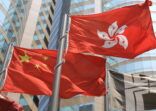The RQFII onshore China bond ETF is expected to launch in the second half.
“Europe has a tendency to have a very high demand for fixed-income products in general, and China offers higher-yield,” He told Fund Selector Asia.
She sees the product as a diversification play for investors in Europe because China’s bond market has a low correlation with European and US bond markets, where yields are expected to remain low.
The firm will partner with UK-based asset manager Source to create the new fixed-income product. Last year, the two firms collaborated on a European ETF that aims to track the performance of the FTSE China A50 Index. CSOP later launched a US version of the product on its own.
CSOP’s fixed income fund isn’t the only mainland product to focus on China bonds. Earlier this month, CCB International partnered with Commerzbank to launch an RQFII ETF in Europe to invest in China’s onshore bond market.
China has been opening its bond market to foreign investors. In a July statement, the People’s Bank of China encouraged foreign central banks, sovereign wealth funds and international institutional investors to buy into China’s inter-bank bond market after it removed the approval procedure and quotas.
The RMB challenge
Widespread investor concern about China’s slowing economic growth, particularly in overseas markets, could lead to worries over RMB depreciation. Such sentiment that could be a big challenge for onshore fixed-income products, she said.
The perception is complicated because of foreign investors’ unfamiliarity with China’s onshore fixed income market.
“Many investors may have experience with Dim Sum bonds [bonds issued outside of China in RMB], but they do not have experience with China’s onshore bonds.”
She said investor views on currency depreciation are mixed. A weaker RMB would trigger an outflow of hot money but could also benefit exports and the overall economy as inward investment becomes cheaper.
CSOP also has plans to launch an RMB-hedged ETF in the US, she said, with details to follow later this year.
Volatile times
Like other RQFII equity ETFs providers, CSOP’s funds fell during China’s July stock market plunge. CSOP had a cumulative outflow of $1.2bn from their funds shortly after the government intervened in the markets in attempt to stabilise them, according to He.
At the height of the stock rout, more than half of the firms listed on the Shanghai and Shenzhen bourses were suspended from trading, which made it easier for the government to prop up the markets.
However, He said investors were confused by government measures such as extending bank loans to brokerages to buy stocks, allowing companies to halt trading and banning investors with more than a 5% stake in a company from selling their shares for a fixed period.
“Foreign investors are distracted by the short-term noises. It’s very important to have patience as the Chinese market experiences ups and downs.
“Many short-term investors are looking for excess returns, which could present difficulties for ETF managers.”
China’s market volatility continues. Last week, CSOP saw a sudden inflow of $400 million into domestic markets.
“Most of that [inflow] is quite short-term. It’s from people who believe China will have a reversal in terms of sentiment and performance.
“But we’ve also seen some of long-term money coming back in from investors who believe the market has stabilised. Investors who commit to China for the long-term will do better [than short-term traders].”
She believes a big wave of long-term investors will come only over time as indications of progress with state-owned enterprise and banking sector reform, for example, become evident.
“These big themes are what is really going to change the sentiment in China’s capital markets,” He said.
















